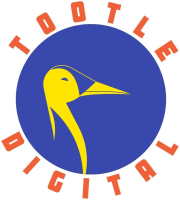Blockchain technology is making its way to the mainstream in a way that will allow people around the world to benefit. But, it’s not surprising if you are unfamiliar with blockchain technology or how it works; it hasn’t historically always been the most accessible to the average person. Maybe you have heard about it but are not sure how to actually explain it to someone in simple terms? All you know is that it’s a part of the future. Well, the future has arrived. Projects like AXIA are making blockchain more inclusive and decentralized in a way that can help the technology be adopted across the globe. Before we talk about how a hyper-deflationary blockchain network like AXIA is changing the game, let’s start with the basics.
A Blockchain Is Not a Cryptocurrency
If you have heard that blockchains and cryptocurrencies are the same thing, you have been misled Blockchains are the underlying technology that cryptocurrencies are built upon. The way that blockchain digitally records and securely transfers information via an immutable ledger is what makes it unique today. AXIA has its own native currency, AXIA Coin, on its own blockchain network on which can generate staking rewards and tap into the project’s all-encompassing ecosystem. Although blockchains and cryptocurrencies are sometimes confused, it’s important to remember that blockchains are simply the technology that makes cryptocurrencies possible.
What Is a Blockchain?
A Blockchain is essentially a digital ledger of transactions across multiple computers where data is verified and stored securely within the ledger. With information being stored across a network of computers instead of a central server, information is decentralized and distributed across the entire network. A blockchain network organizes information into blocks. As new information is added, new blocks are formed, which creates a chain.
All network participants have a copy of the ledger, thereby decentralizing the information, which is accessible to everyone. Each block has its own unique identifier called a hash, which helps to.identify its place in the chain of blocks. If someone were to gain access to a hash to tamper with a block, it would immediately be made known to the entire blockchain network. If the hacker wanted to corrupt the information, they would have to change every block in the chain.
That is almost impossible to do since blocks are constantly being added to the chain and so many participants hold records of all transactions on the blockchain. This heightens the security of the ledger data while simultaneously decentralizing information.
Tokenomics
There are many projects that are creating their own ecosystems within blockchain networks. Tokenomics refers to the economic model beghind a given project’s cryptocurrency. Token models can often follow one of two models:
- Inflationary models
- Deflationary models
Inflationary models often exist when tokens have an unlimited supply and can continue to be minted in perpetuityThis model has no scarcity factor to it and has proven to have many drawbacks, both in the traditional finance and blockchain industries. AXIA, alternatively, follows what is known as a hyper-deflationary model in which the Total Supply is constantly reduced through any form of activity or participation and thus ongoing scarcity of AXIA Coin is always being created.. The benefit of this is that, while utility is always being added to the ecosystem through new developments, platforms, etc., the supply of of the currency is continuously becoming more scarce, which delivers value to everybody holding it with each and every action taken by any participant.
Mobile Staking
Staking is the process of participating in the validation of transactions within a blockchain network. In a blockchain network, anyone who meets the requirements within the blockchain network can validate transactions and earn staking rewards.
Using AXIA as an example:
- People who are validators stake AXIA Coin to help secure the network by validating transactions.
- People who are nominators stake AXIA Coin and are the ones who select the validators who are worthy of trust.
Conclusion
Blockchain networks were once part of the future, but they are now part of the present. Information is more secure, decentralized, and available to anyone who is part of the network as the information is stored across a network of computers. With a hyper-deflationary tokenomics model, the supply is constantly decreasing due to network participation, staking, and other activity. This creates scarcity of the coin through coin burning. By constantly learning about and educating yourself on blockchain technology and rewarding models like AXIA, you can get a leg up and work towards building a more rewarding future for yourself and those that you care about.
